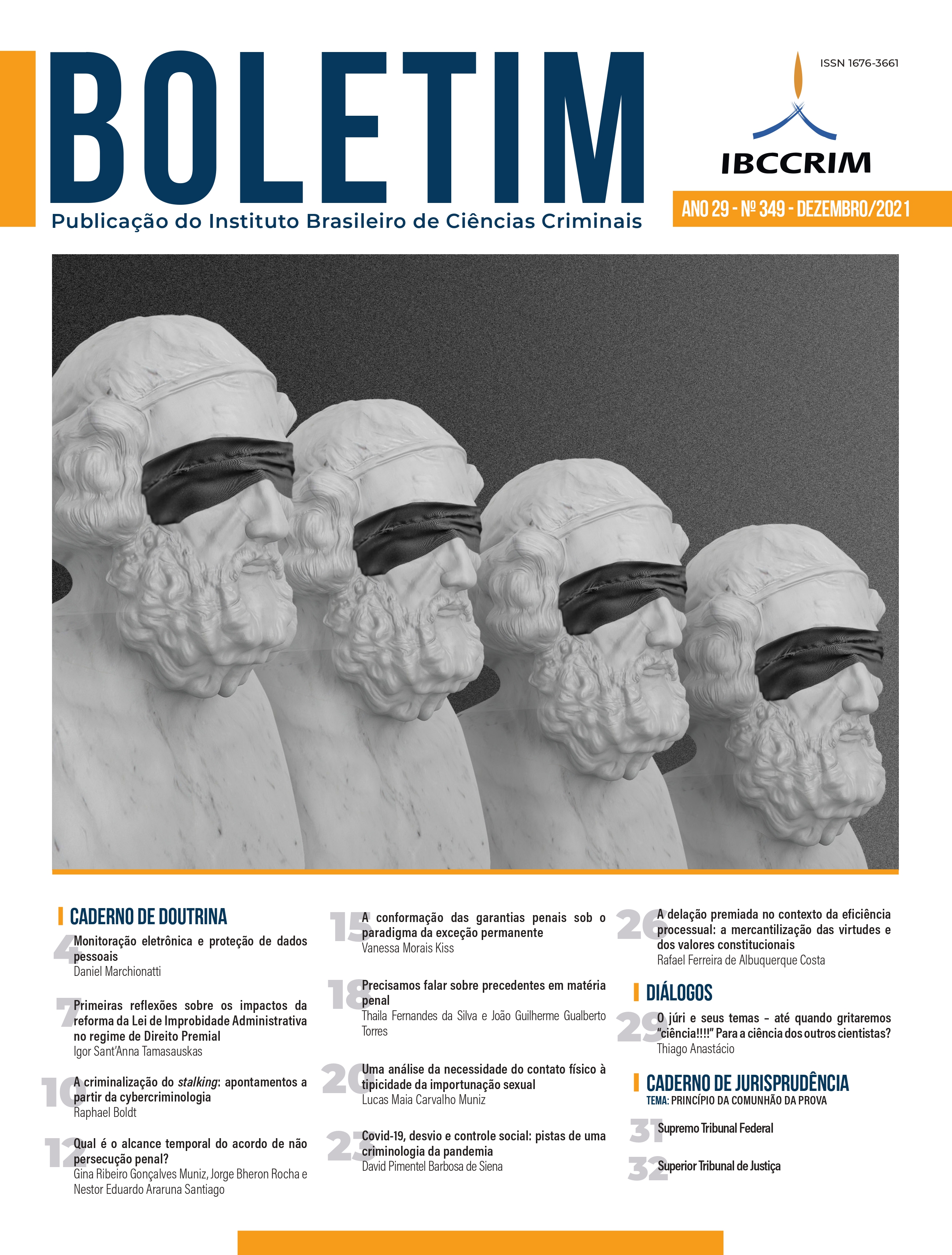Covid-19, deviation and social control
clues to a pandemic criminology
Views: 69Keywords:
Criminology, Pandemic, Coronavirus, Violence, PolicingAbstract
The pandemic of the new coronavirus represents new determinations in criminal dynamics, as measures of isolation that have a decisive impact on routine activities. At no time, it seems essential to think of epidemiological criminology, in the terms of Timothy A. Akers and Mark M. Lanier, who know and deal with an exhibition of fields in public health and criminology. Command of the routine activities theory by Lawrence E. Cohen and Marcus Felson, the text offers a conjunctural analysis of the factors that positively and negatively influence various forms of violence and deviance. On the other hand, like the prospects for the criminal future, a critical critique of policing is developed as a technique for social control of threats potentially hosted by the flu virus.
Downloads
Publication Facts
Reviewer profiles N/A
Author statements
- Academic society
- Instituto Brasileiro de Ciências Criminais
- Publisher
- IBCCRIM
References
AKERS, Timothy A.; LANIER, Mark M. Epidemiological criminology: Coming full circle. American Journal of Public Health, v. 99, n. 3, p. 397–402, mar. 2009.
COHEN, Lawrence; FELSON, Marcus. Social change and crime rate trends: a routine approach. American Sociological Review, v. 44, n. 4, p. 588-608, aug. 1979.
COLLINS, Keith; YAFFE-BELLANY, David. About 2 million guns were sold in the u.s. as virus fears spread. The New York Times, april 1, 2020. Disponível em: <https://nyti.ms/3fKRnp8>. Acesso em: 14 mai. 2020.
EISNER, Manuel; NIVETTE, Amy. Violence and the pandemic: urgent questions for research. Harry Frank Guggenheim Foundaution, New York, april 2020. Disponível em: <https://bit.ly/3cGyrW9>. Acesso em: 23 de abril de 2020.
FATSIS, Lambros. Inside the COVID-19 state: protecting public health through law enforcement. The BSC Blog, april, 20, 2020. Disponível em: <https://bit.ly/3sL93GP >. Acesso em: 28 de abril de 2020.
FLECKNOE, Daniel; WAKEFIELD, Benjamin C; SIMMONS, Aidan. Plagues & Wars: The ‘Spanish Flu’ Pandemic as a Lesson from History. Medicine, Conflict, and Survival, n. 34, v. 2, p. 61-68, 2008.
FOUCAULT, Michel. Vigiar e punir: nascimento da prisão. 35. ed. Petrópolis: Vozes, 2008.
HOPPE, Trevor. Punishing Disease: HIV and the Criminalization of Sickness. Oakland: University of California Press, 2018.
KELLERMAN, Arthur L. et. al. Gun ownership as a risk factor for homicide in the home. New England Journal of Medicine, v. 329, n. 15, p. 1084-1091, 1993 oct.
LAPPI-SEPPÄLÄ, Tapio; LEHTI, Martti. Cross-Comparative Perspectives on Global Homicide Trends. Crime and Justice, v. 43, n. 1, p. 135-230, 2014.
SEMPLE, Kirk; AHMED, AZAM. Murder Rates See Steep Decline: ‘It’s Taking People Off the Streets’. The New York Times, 11 apr. 2020. Disponível em: <https://nyti.ms/2T1tnnW>. Acesso em: 14 maio 2020.
SOUTH, Nigel; BRISMAN, Avi. The Routledge international handbook of green criminology. UK: Routledge, 2014.
Downloads
Published
How to Cite
Issue
Section
License
Copyright of published articles belongs to the author, but with journal rights over the first publication and respecting the one-year exclusivity period. Authors may only use the same results in other publications by clearly indicating this journal as the medium of the original publication. If there is no such indication, it will be considered a situation of self-plagiarism.
Therefore, the reproduction, total or partial, of the articles published here is subject to the express mention of the origin of its publication in this journal, citing the volume and number of this publication. For legal purposes, the source of the original publication must be consigned, in addition to the DOI link for cross-reference (if any).


 Português (Brasil)
Português (Brasil)
 English
English
 Español (España)
Español (España)






